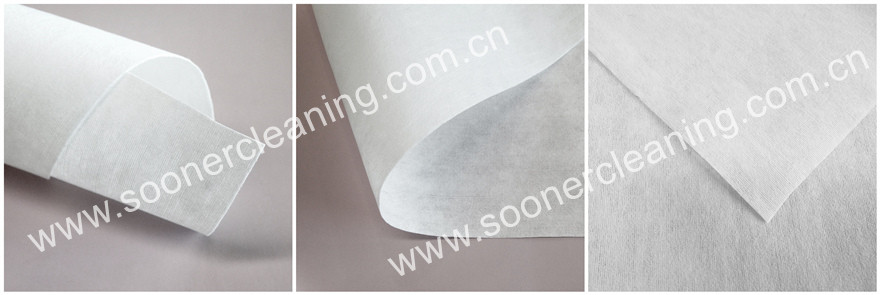
With the tightening of environmental policies and the awakening of consumers' green awareness, flushable and biodegradable non-woven fabrics have become popular alternative solutions. But who is more environmentally friendly between the two? This article provides in-depth analysis from four dimensions: material composition, decomposition mechanism, application scenarios, and ecological impact, to help you make scientific choices.
Features: Quickly disperses when in contact with water, claims to be safe to flush into the toilet, commonly seen in wet wipes and hygiene products.
Characteristics: It relies on microbial action to decompose into water, carbon dioxide, and biomass, and is suitable for packaging, agriculture, and other fields.
|
Dimension |
Disposable Non woven Fabric |
Degradable Non woven Fabric |
|
Decomposition conditions |
water flow+pipeline mechanical force (simulating toilet environment) |
high temperature/high humidity industrial composting environment required |
|
Decomposition products |
microfiber fragments (possible residue) |
CO ₂, water, organic matter (completely decomposed) |
|
Ecological risk |
possible blockage of pipelines or entry into water bodies |
slow degradation in ordinary environments, requiring classified recycling |
|
Carbon footprint |
low (mainly wood pulp) |
high (high energy consumption in PLA production) |
❌ Avoid using in areas without supporting composting facilities
China's "plastic ban order" promotes an annual increase of 25% in PLA non-woven fabric production capacity.
Enzymatic degradation technology: adding biological enzymes to accelerate the degradation rate in ordinary environments.
The environmental friendliness of washable and biodegradable non-woven fabrics is not absolute and needs to be comprehensively evaluated in combination with usage scenarios and infrastructure. In the short term, dispersible products have an advantage in convenience; In the long run, biodegradable materials are more in line with the trend of circular economy.
